본문 시작
 taeangun tour
taeangun tour
8 Scenic Sites in Taean
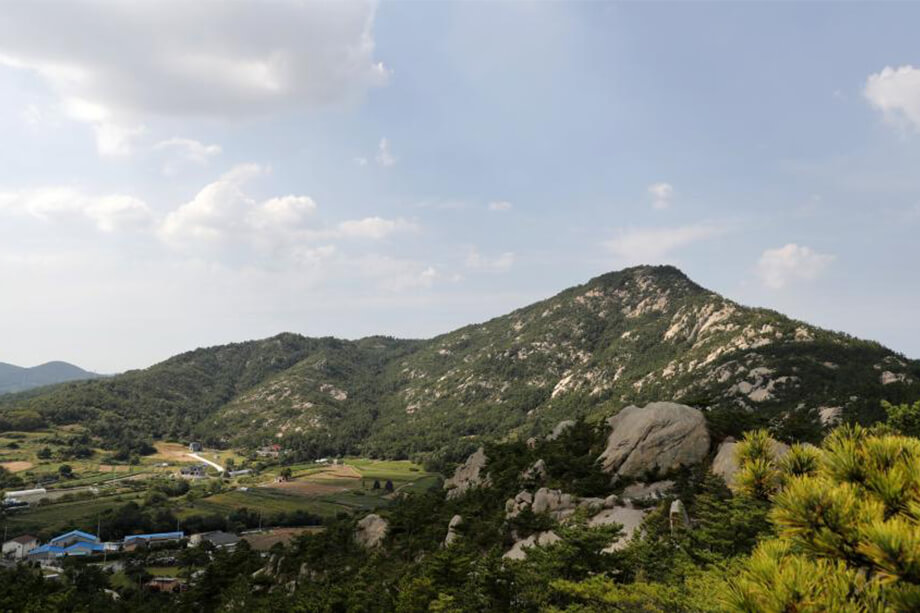
Scenic Site #1 Baekhwasan Mountain
Baekhwasan Mountain was given its name as the snow-capped mountain peak in winter appears as though it is covered in a white cloth. There are many mountain peaks nearby including Hwanghaksan Mountain, Ihwaryeong, Imanbong Peak (989m) and Huiyangsan Mountain. There are trails leading up to Baekhwasan from Ihwaryeong to its north, as well as Bunji-ri, Yeonpung-myeon and Oseogol, Mungyeong-eup to its west. The trail that is easiest to climb due to its gentle slopes is the one that starts in Ihwaryeong, which is in the vicinity of Suanbo Hot Springs.
It takes about two hours to hike from Ihwaryeong to the peak of Hwanghaksan Mountain, which overlooks Ha-ri, Mungyeong-si and faces Baekhwasan toward the south. From here, you can climb the southern ridge to get to the rocky zone, and a 20-min hike will take you to the peak of Baekhwansan Mountain. At the peak, you will get to enjoy a breathtaking view of Imanbong Peak, Sirubong Peak and Huiyangsan Mountain to the west. There are trails that take you down to Imanbong Peak or Anmal Village in Bunji-ri, or you can take the trail that you climbed up for the descent. You can get to Anmal Village by taking the western ridge and climb down past Pyeongjeonchi.
It will take you past the 973 Peaks and Sadarijae to get to the village. The trail is about 22.5km long, and takes about 6 hours to finish. From Bunji-ri, Yeonpung-myeon, you can ascend the mountain by taking either the southern or eastern ridge. A 40-min hike along the eastern ridge will take you to Huindomoe, and if you continue along, you will reach the main ridge. Here, you can take the southern ridge to get to a heliport, from which it takes about an hour to reach the peak. For the descent, you can hike down the western ridge to get to Imanbong Peak past Gombong Peak. The name, Gombong, which literally means the “Bear Peak,” was given because it used to be home to Asiatic black bears. From Imanbong, you can climb down to Anmal Village in Bunji-ri. This hiking course is 16.5km long and takes about 4 hours and 30 minutes to complete.
Baekhwasan Mountain in Taean-eup, Taean-gun, Chungcheongnam-do
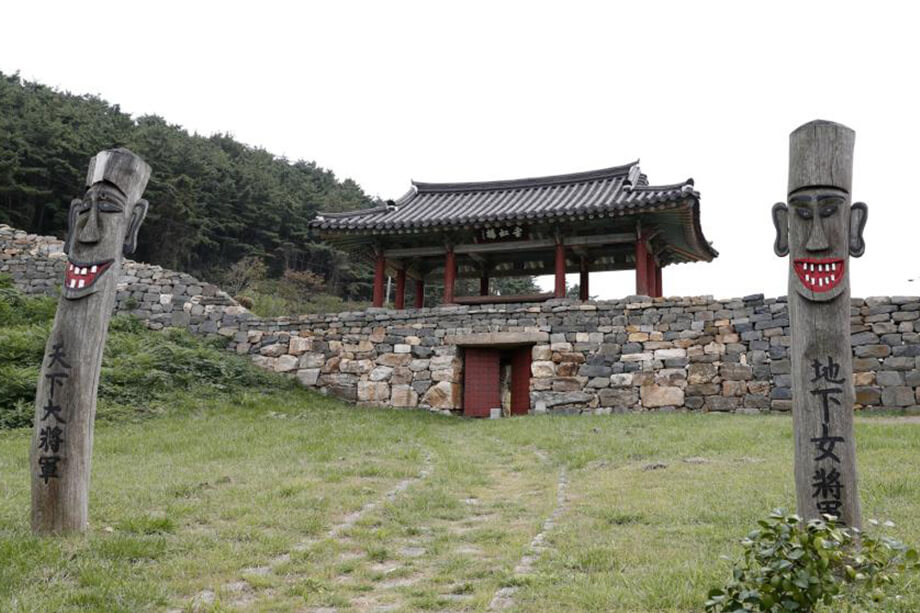
Scenic Site #2 Anheungseong Fortress
Anheungseong (Anheungjinseong) Fortress, situated in the mountains behind Anheung Port in Jeongjuk-ri, Geunheung-myeon, was built in 1655 (6th year of King Hyojong’s reign over Joseon).
As for the background behind its construction, Kim Seok-gyeon, the then-Governor of Gyeonggi, proposed the King the construction of Anheungjinseong Fortress, to which the King responded by calling upon Lee Hu-won, an intellectual orator, for his opinion on the need for the fortress construction.
Afterwards, the King ordered the Governor of Chungcheong to erect the fortress, which took 10 years for the residents of 19 nearby villages to complete.
Anheungseong Fortress had remained intact for some 240 years until the Donghak Peasant Revolution in 1894 (31st year of King Gojong’s reign over Joseon), during which all of the fortress structures were destroyed, and the fortress was naturally forced to be shut down.
The fortress gates in the west, east, north and south, called Suhongnu, Suseongnu, Samseongnu and Bokparu, respectively, remain relatively intact today.
Anheungseong Fortress is a stone fortress that is 1,568m in circumference and 3.5m in height. It was designated as Chungcheongnam-do Monument No. 11 on July 3, 1979.
1155 Jeongjuk-ri, Geunheung-myeon, Taean-gun, Chungcheongnam-do

Scenic Site #3 Anmyeondo Island Recreational Forest
The pine trees of Anmyeondo Island were used as wood for building royal palaces and caskets for the royal family in the Joseon Dynasty and for shipbuilding purposes as well. A strict policy was carried out to protect the pine forest on Anmyeondo Island, and this is why the high-quality pine trees have remained to this day.
The red pine trees, in particular, are known for their excellent wood quality. This is why this particular species of pine trees were used in the construction of the royal palaces and ships in the past. The sight of the towering red pine trees will, without a doubt, take your breath away.
Jeongdang-ri, Anmyeon-eup, Taean-gun, Chungcheongnam-do

Scenic Site #4 Mallipo Beach
Mallipo Beach is regarded as one of the top three beaches on the west coast, along with Daecheon and Byeonsan beaches.
The 250m-wide beach stretches for about 3km, and covers an area of 200,000m2.
It is famous for the fine sand, gentle slopes and shallow waters, and this is why it has become a beloved vacation spot by families with young children.
There are many accommodations and recreational facilities nearby, and one can even enjoy fishing from the breakwater in the area. It is also known for the Monument of the Mallipo Love Song by Ban Ya-wol.
138 Mallipo 2-gil, Sowon-myeon, Taean-gun, Chungcheongnam-do
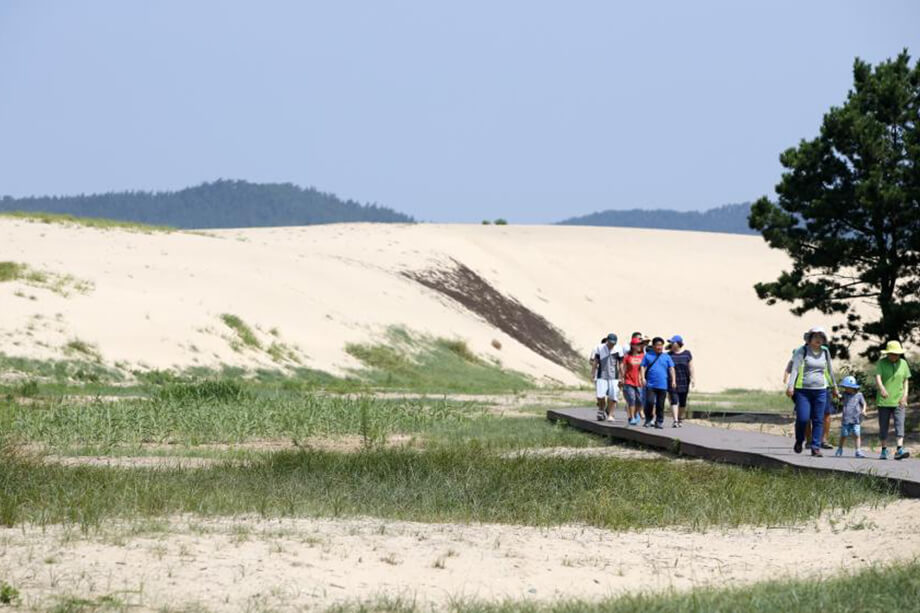
Scenic Site #5 Sinduri Coastal Sand Dune
Sinduri Coastal Sand Dune, located on Sinduri Beach in Taean-gu, is the most famous sand dune area in Korea. It refers to the extensive sandy area that is reminiscent of a desert.
It is speculated to have been formed around 15,000 years ago following the Ice Age. The sand dunes were created with the sand carried to the coastal area from the sea by strong winds over tens of thousands of years.
Considering the area is directly impacted by the northerly and westerly seasonal winds, it appears that the winds caused weathering on the mica schists in the nearby mountains and the fragments of these rocks entered the sea. From there, they were carried to the coastline by the waves and collected there to form the sand dunes.
Considering the area is directly impacted by the northerly and westerly seasonal winds, it appears that the winds caused weathering on the mica schists in the nearby mountains and the fragments of these rocks entered the sea. From there, they were carried to the coastline by the waves and collected there to form the sand dunes.
The sand dunes act as a buffer zone between the sea and land, protecting farmlands from the sea winds and preventing seawater from flowing into the land area.
201-122 Sinduhaebyeon-gil, Wonbuk-myeon, Taean-gun, Chungcheongnam-do
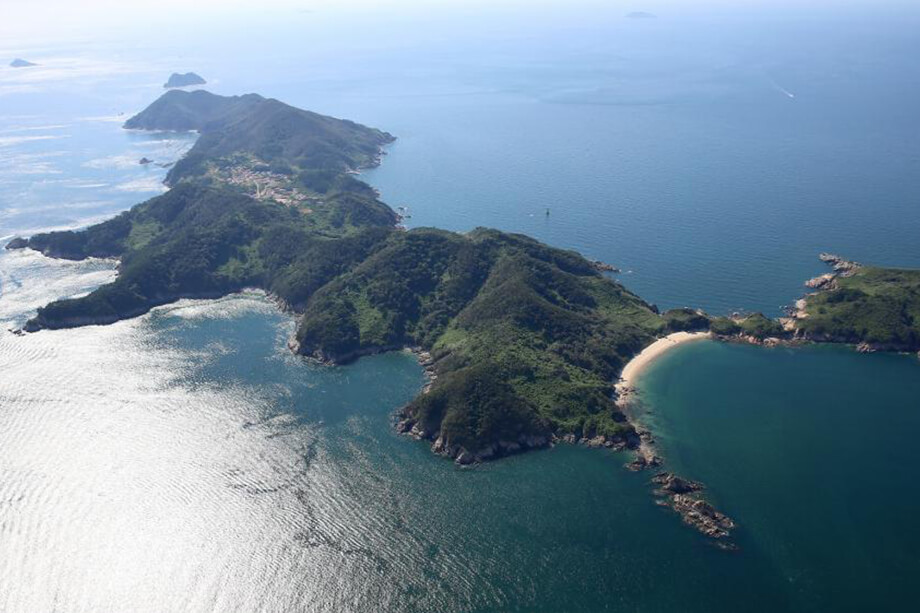
Scenic Site #6 Gauido Island
Gauido Island is located 5.5km west of Anheung. During the 40-min boat ride from Anheung Port to Gauido Island, you can enjoy a breathtaking scenery of Jukdo, Bueokdo, Mokgaedo and Jeongjokdo islands as well as Sajabawi, Dongnimmunbawi and Geobukbawi rocks.
Once you reach the island, you will be welcomed by a small yet beautiful sandy beach, which never fails to captivate the visitors. The islands of various sizes that can be seen far away are also eye-catching.
Gauido-ri, Geunheung-myeon, Taean-gun, Chungcheongnam-do
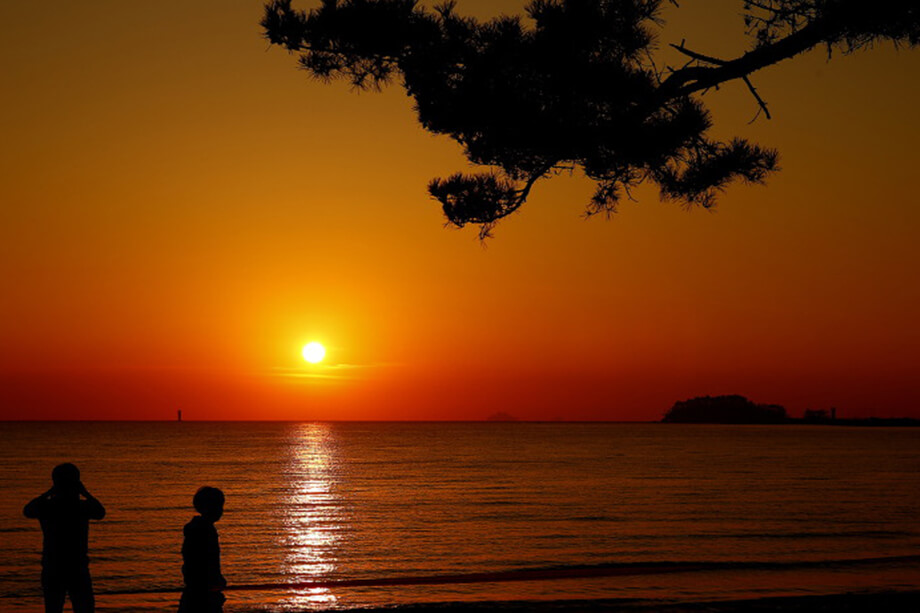
Scenic Site #7 Mongsanpo Beach
Mongsanpo Beach is regarded as the “float stone of Taean,” which boasts the largest beach in the East. Connected to Cheongpodae Beach, it is famous as a beach that never ends. The scenic pine forest behind the beach has served as the backdrop of numerous hit movies and dramas. There is an auto camping site and a parking lot nearby, and the Siin Village, Nature Observation Path, and Tidal Flat Experience Site offer a chance for visitors to enjoy other fun experiences besides sunbathing and swimming.
A wide range of artworks made with sand are put on display at the beach in the summer season to delight the vacationers’ eyes.
353-59 Sinjang-ri, Nam-myeon, Taean-gun, Chungcheongnam-do
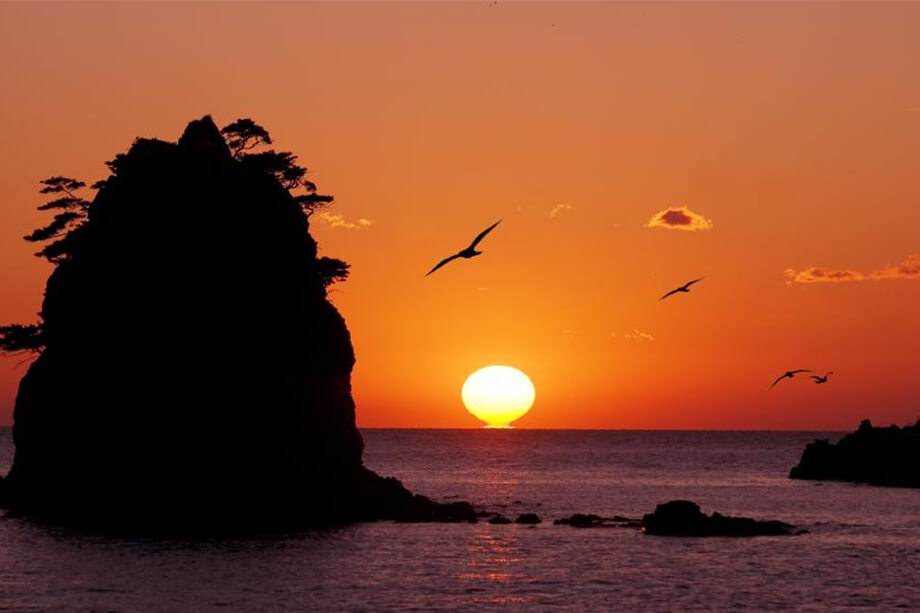
Scenic Site #8 Halmibawi and Harabibawi Rocks
This is arguably the best spot to check out the sunset on the west coast. Your jaws will drop as you watch the glow of the sunset, appearing as though it is being sucked into the sea behind the splendid Halmibawi and Harabibawi Rocks.
Halmibawi and Harabibawi Rocks, Seungeon-ri, Anmyeon-eup, Taean-gun, Chungcheongnam-do